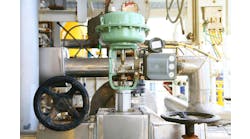"Change is bad." That's what one project manager used to post on his office door. Fieldbus is a change for our engineering contractors, and the sentiment of project managers can change from joy about savings to despair about late change orders and rework. The ideal project for an EPC is a twin of the last one they did because this scenario drives all the uncertainty out of their shop, or at least into the laps of procurement and expediting. Last month's column discussed the ways fieldbus end users can avoid increasing stress for their EPC consulting firm, and I promised a few more. How else are projects complicated by fieldbus, and what can we do to transform all the scary lions of uncertainty and late changes into docile, predictable lambs?
Early in the design phase, it's critical to nail down a viable host/DCS. If there's uncertainty about the I/O count or fieldbus segment loading, request unit pricing for incremental I/O processors and expansion racks. It's not uncommon to get a pitch from suppliers at this stage, to lock in a portion of the field devices. If you sole-source their field instruments, you can get better pricing on them as well as the host.
[pullquote]This is great and not a waste of time to consider, but I'd advise against dealing away your hand too early, at least when it comes to valve positioners. I've seen several positioners in operation on live processes—the fieldbus version of five of the leading positioner suppliers (Fisher, Metso, Flowserve, Dresser and Westlock) in North America—and I can say with certainty they're all capable of doing the job. But all are not created equal. Since control in the field is a good choice for speed and determinism, one needs to understand the positioner capabilities in greater detail before making a commitment. Positioners are also where the most interesting and useful diagnostic and asset management capabilities are usually present—or not.
Even if you don't want to dabble in sole-source or variations of "main instrument vendor" dealings, one crucial demonstration consists of the following: The host bidder's best estimation of a three-valve segment macrocycle optimized for solving PID in both the host and the field. Ask for a three-valve segment or the worst case you anticipate for your job. A four-plus valve segment is doable with judiciously chosen devices and the right host capabilities if you think you'll need it. Be sure you indicate that you want to do routine diagnostics and calibrations, so a minimum of roughly 30% macrocycle free time is a must. You're aiming to receive a document showing a typical macrocycle with three analog input (AI) blocks, three proportional-integral-derivative (PID) blocks, and three analog output (AO) blocks—one case with PID in the host and one with PID in the field device. Ask to see the block executions and "compel data" events (deterministic transmission of publish-subscribe variables) graphically on a 1-second-or-less timeline.
The variation will be significant from offering to offering, or from host-based control to field-based. Consider your worst performing cases, and determine early if the hardware will meet your process needs. Make sure you're looking at released product and not "betas!" My prediction is you'll find your "acceptable bidders list" for positioners is two or three. Maybe some hosts will fall out of contention. The key is to understand each host's limits and narrow the field at an early stage or risk uncertainty and compromise later. Many hosts have undergone new registration tests to prove out the majority of capabilities a typical project will require for smooth implementation. If you're inclined to stray from hosts and devices registered by Fieldbus Foundation, be sure to build in hours for you and your consultant to gain comprehensive training in the application of fieldbus on that host and connected devices. Once the host DCS and positioner capabilities are apparent, both client and contractor will understand the basis for both asset management and control performance. Next month we'll consider network topology choices.





